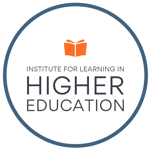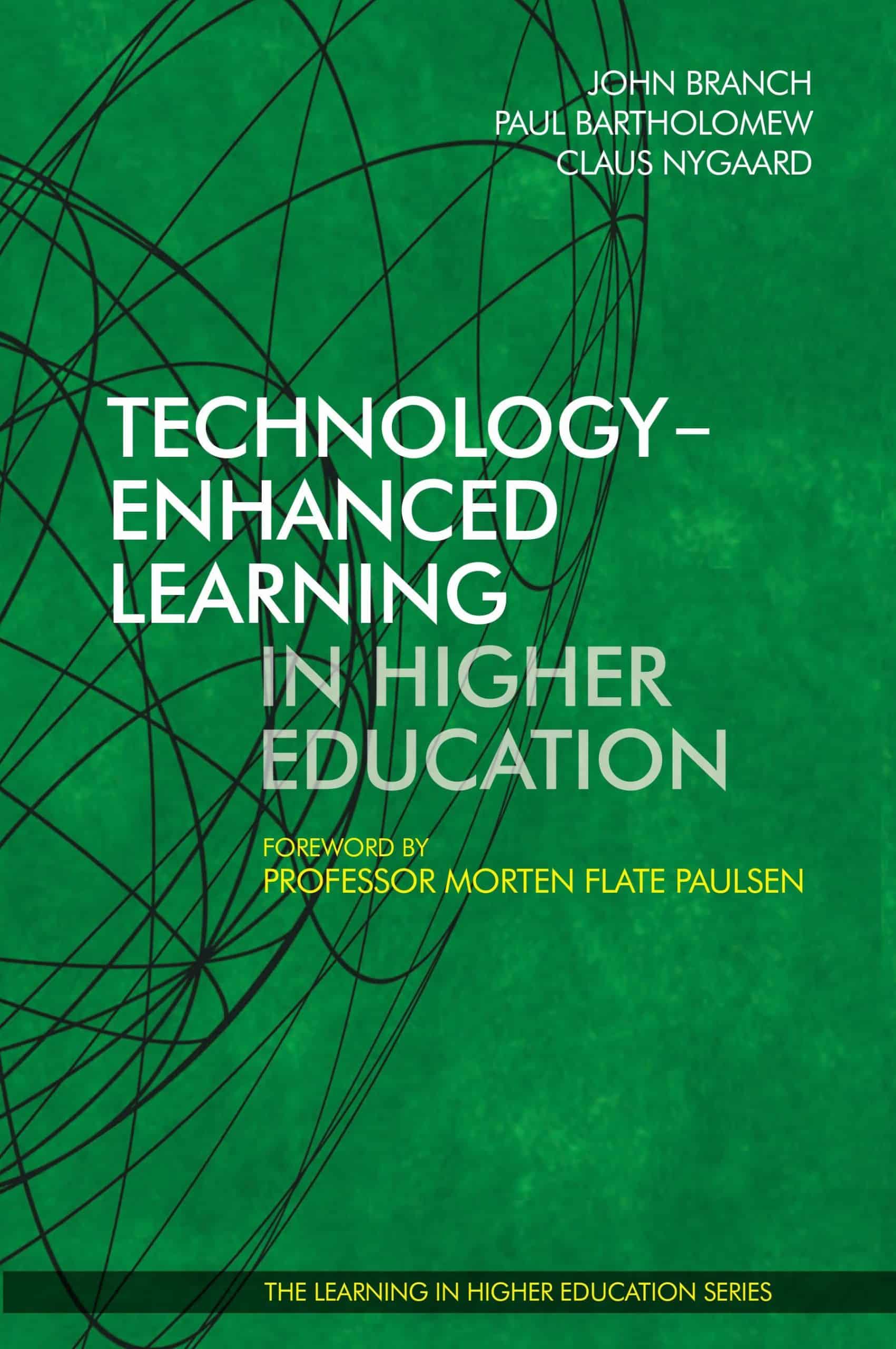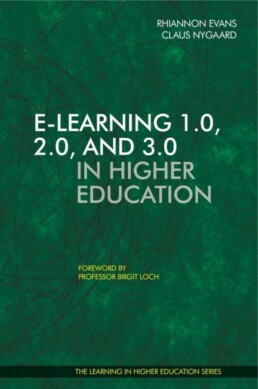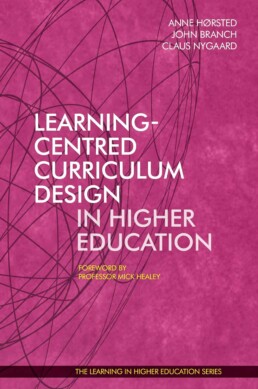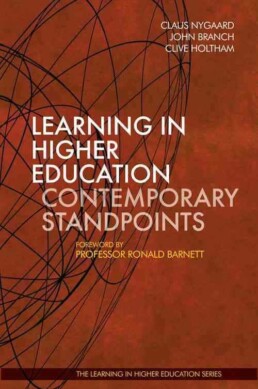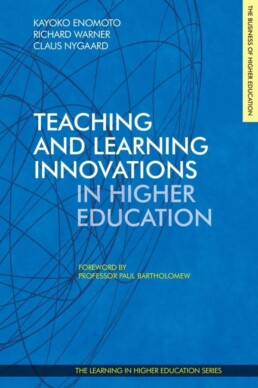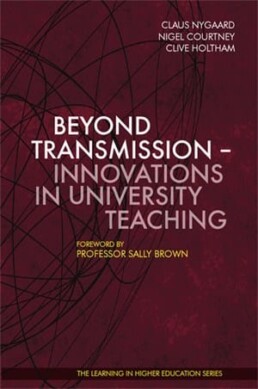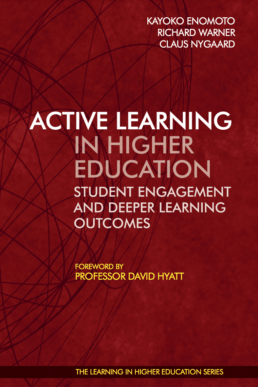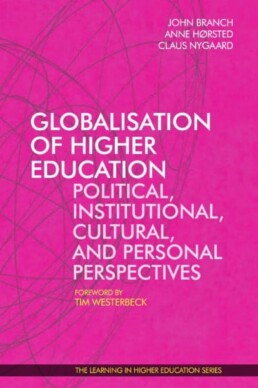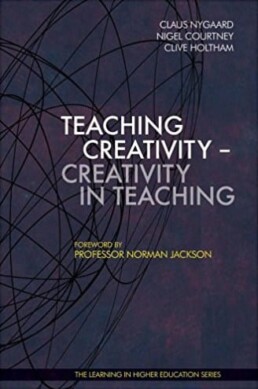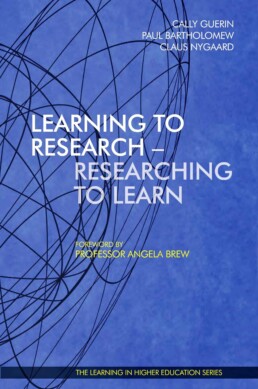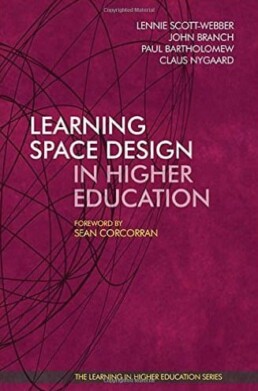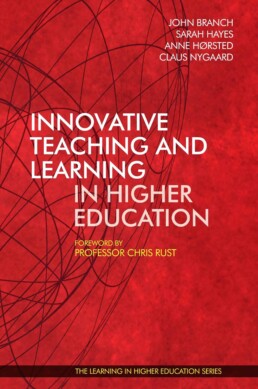Description
Technology-Enhanced Learning in Higher Education
Are you ready to introduce technology in your classroom?
Then read this book for inspiration!
Technology-Enhanced Learning in Higher Education is written to inspire faculty members to introduce technology in the classroom. Not for the sake of the technology itself, but for the sake of enhancing their students’ learning outcomes.
Disrupting traditional higher education
Traditionally higher education has been envisaged as a process in which the teacher disseminates information to students and thereby directs them to perform. Lecturing, instructing, directing, and cajoling have long been significant activities of university teachers. Some may say it has been going on for way too long.
The implementation of new technologies is currently disrupting this traditional model of teacher-driven didactic teaching.
If not by faculty members at universities themselves, then by their students, and indeed by private providers of technology-driven educations.
The technological alternatives to traditional university teaching and learning practices are many. And they are already being implemented at universities.
Showcasing pioneering new applications of technology-enhanced learning in higher education
This book draws upon faculty members’ experiences who have been pioneering new technology applications in higher education, highlighting not only the technologies themselves but also the impact they have had on student learning.
The book illustrates how new technologies can be adopted and incorporated into the university curriculum—technologies increasingly well-known and accepted by today’s ‘digital natives’ undertaking higher education.
One key conclusion is that learning remains a social process, even in technology-enhanced learning contexts. The technology-based proxies we construct need to retain and reflect both the teacher and the students’ agency.
Technology-Enhanced Learning in Higher Education showcases some of the latest pedagogical technologies and their most creative, state-of-the-art applications to higher education from around the world.
Each of the book chapters explores technology-enhanced learning in higher education in terms of either policy or practice.
The chapters contain detailed descriptions of approaches taken in very different curriculum areas and demonstrate clearly that technology can enhance students’ learning only if it is designed with students’ learning process at its core.
So the use of technology in education is more linked to pedagogy than it is to bits and bytes.
Pages: 264
Published: 2015
ISBN: 9781909818613
Libri Publishing Ltd., Oxfordshire, UK
About the Editors of Technology-Enhanced Learning in Higher Education
John Branch is the Academic Director of the part-time MBA programmes and Assistant Clinical Professor of Business Administration at the Stephen M. Ross School of Business, and Faculty Associate at the Center for Russian, East European, & European Studies at the University of Michigan in Ann Arbor, U.S.A.
Paul Bartholomew is Pro-Vice-Chancellor at Ulster University, Belfast, North Ireland.
Professor Dr Claus Nygaard is Executive Director of the Institute for Learning in Higher Education and Executive Director of cph:learning and the Steelcase Active Learning Centre in Copenhagen.
Overview of the Book
- Chapter 1. Introducing technology-enhanced learning. By Paul Bartholomew, John Branch & Claus Nygaard (pp. 1-16).
- Section 1. An introduction to technology-enhanced learning policy. By Paul Bartholomew & Sarah Hayes (pp. 17-32).
- Chapter 2. Rudiments of a strategy for technology-enhanced university learning. By Claus Nygaard (pp. 31-50).
- Chapter 3. Using technology-enhanced learning to pave the way to a new performative teaching and learning culture. By Deborah Newton (pp. 51-78).
- Chapter 4. “Look at these new gadgets!”: the Achilles‘ heel of technology-enhanced learning. By Eva Dobozy, Jim Mullaney & David Gibson (pp. 79-96).
- Section 2. Introducing the practice of technology-enhanced learning. By Steve Drew & Diane D. DePew (pp. 97-112).
- Chapter 5. Where’s humanity? Challenging the policy of discourse of ‘technology-enhanced learning’. By Sarah Hayes & Paul Bartholomew (pp. 113-134).
- Chapter 6. iBook technology to encourage self-assessment in the classroom. By Nicola Bartholomew & Graham Kelly (pp. 135-158).
- Chapter 7. Reality Bites: reflections on the lived academic experience of e-portfolio use. By Sarah King & Emma Flint (pp. 159-186).
- Chapter 8. Java Programming Laboratory: a technology-enhanced learning environment for student programmers. By Steve Drew & Wayne Pullan (pp. 187-210).
- Chapter 9. Enhancing student learning in online nursing education using ApprenNet technology. By Diane D. DePew, Frances H. Cornelius & Carol Patton. (pp 211-232).
- Chapter 10. Using mobile technology to enhance field education: a blended learning model. By Leon Cygman (pp. 233-253).
A detailed description of the chapters in Technology-Enhanced learning in Higher Education
- Chapter 2 by Claus Nygaard presents a rudimentary strategy for technology-enhanced learning in higher education by explicitly integrating technology, learning, and curriculum. It begins by reviewing cognitive and social learning theories. It then conceptualises technology-enhanced learning from both teacher-driven or student-driven perspectives, focusing on either distribution, dialogue, or construction. Chapter 2 continues by presenting the promised rudiments of a strategy for technology-enhanced learning in higher education. Finally, it formulates some recommendations that may hopefully help university staff engaged in developing curricula for technology-enhanced learning. The key lessons from Chapter 2 are: 1. learning and technology are both equally important components in a strategy for technology-enhanced university learning, 2. without a strategy for learning, it is not viable to formulate a strategy for technology-enhanced learning, 3. it plays an important role for student learning whether technology-enhanced activities are teacher-driven or student-driven, and whether these are planned with a focus on either distribution, dialogue or construction, and 4. every planning of technology-enhanced activities should rest on a formulated strategy that takes into account both learning and technology.
—oOo—
- Chapter 3 by Deborah Newton proposes a new performative approach for using technology-enhanced learning in higher education which may be described as a ‘real-world’ approach that is ethically justifiable and respectful of the importance of the ‘student voice’. It begins by radically re-defining technology-enhanced learning within a performance studies context through the use of critical theory. It then explores the theoretical foundations of technology-enhanced learning from a social constructionist perspective. Finally, Chapter 3 illustrates an innovative and creative application of technology-enhanced learning in performance studies. The key lesson from Chapter 3 is that technology in and of itself does not enhance learning, but instead through its intelligent use in carefully designed curricula that challenge and collapse cultural binarisms and shift the perspective of learning to a teacher-learner relationship accepting of shared responsibility and empowerment for learning outcomes.
—oOo—
- Chapter 4 by Eva Dobozy, Jim Mullaney, and David Gibson critiques the uses of new and emerging technologies in higher education. It begins by developing a theoretical framework for the critique by examining the growing gap between technology-enhanced learning theory and practice. It then presents examples of ‘revolutionary’ and ‘evolutionary’ educational change. Chapter 4 continues by raising the ‘digitisation of pedagogy’ dilemma, thereby pointing to the need for a clear focus on technology in higher education. Finally, it draws some conclusions, outlines implications, and offers practice recommendations. The key lesson from Chapter 4 is that new and emerging technologies must not be adopted blindly but instead integrated mindfully in pedagogical practice.
—oOo—
- Chapter 5 by Paul Bartholomew and Sarah Hayes challenges the assumption that technology’s introduction (within a given context) will enhance learning. It begins by critiquing the very term ‘Technology-Enhanced Learning’ and the associated implication that technology will enhance learning as an ‘exchange value’ transaction. It then takes a critical discourse analysis approach to substantiate this specific critique. Chapter 5 continues by placing this critique within a wider socio-political context that considers UK Higher Education’s reality in 2014. Finally, it advocates for the reconnection of human endeavour with the claimed (economic) gains attributed to technology in higher education. The key lesson from Chapter 5 is that the academic community would benefit from having an ongoing constructive debate characterised by a language of critique and possibility, not by a transactional account aligned to ‘exchange value’.
—oOo—
- Chapter 6 by Nicola Bartholomew and Graham Kelly explores potential strategies for implementing iPad technology to support student self-assessment. It begins by exploring the overarching drivers for implementing technology-enhanced learning and the potential pitfalls to be considered when investing in tablet technologies at an institutional level. It then critiques the application of tablet computers such as iPads, as personal learning tools for study management and considers alternative uses to promote self-assessment, self-regulation and active learning. Chapter 6 continues by examining the multimodal nature of Apple’s iBook technology, within a blended learning context, as a means to accommodate diverse learning styles. Finally, it reviews our own practice, which explores using an interactive formative eBook built using iBooks Author; made available on iPads within a higher education classroom environment. The key lesson from Chapter 6 is that tutor ownership of the pedagogic design principles which underpin the deployment of learning technologies is a primary factor for ensuring successful learner engagement.
—oOo—
- Chapter 7 by Sarah King and Emma Flint examines the use of ePortfolios to enhance learning in higher education. It begins by exploring the philosophy and theory underpinning ePortfolio use and developing reflective and experiential learners. It then presents two contrasting case studies from Birmingham City University in which ePortfolios are embedded within the undergraduate law programme to support personal and skills development in students. Finally, Chapter 7 examines critical incidents that can impact the use and value of ePortfolios in higher education. The key lesson from Chapter 7 is that the lived experience of technology use demands flexibility and responsiveness in design and subsequent implementation to enhance learning in higher education.
—oOo—
- Chapter 8 by Steve Drew and Wayne Pullan describes an innovative, Web-based managed learning system (JPL) that was devised to scaffold novice Java language computer programmers. It begins by introducing the underlying learning challenges which these students’ experience when learning to program in Java. It then leads the reader through the learner-driven, evidence-based design and development of the JPL system components. Finally, Chapter 8 presents evidence of the system’s effectiveness by discerning student learning experiences and outcomes. The key lesson from Chapter 8 is that technology can increase the flexibility of access to the learning environment and the teacher’s access to student progress for timely intervention, thereby enhancing learning in higher education.
—oOo—
- Chapter 9 by Diane D. DePew, Frances H. Cornelius, and Carol Patton demonstrates the use of ApprenNet technology for assessing students’ application of critical thinking to guide appropriate responses in challenging nursing situations. It begins by examining the theoretical foundation of cognitive apprenticeship and experiential learning. It then introduces the ApprenNet technological process. Chapter 9 continues with an in-depth review of this technology’s application to support learning in a specific nursing programme. Finally, it discusses the value, limitations, and broader applications of ApprenNet technology. The key lesson from Chapter 9 is that teachers can utilise technology to link the classroom to practice via structured learning activities that permit faculty members to assess student performance.
—oOo—
- Chapter 10 by Leon Cygman examines mobile telephone technology for assessing student pilots’ performances. It begins by describing the general problems faced by instructors who cannot assess students due to the limited interaction, which is inherent in field education. It then illustrates a technology solution that was implemented in in-flight education. Finally, Chapter 10 discusses how this technology’s implementation supported meaningful dialogue, strengthened the learning outcomes, and enhanced student engagement. The key lesson from Chapter 10 is that technology can particularly enhance learning in situations in which student-instructor interaction is limited.
